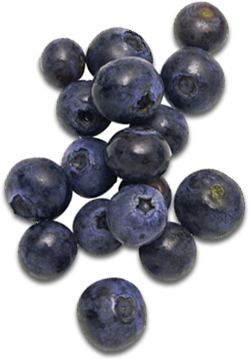no items to display
Fall/Winter Fruit Feature: Pomegranate
There’s something special about seasonal fruits like pomegranate. It’s wonderful that we can eat apples, oranges, and bananas any time of year, but honestly, it makes these fruits a little rote. That’s why in the fall and winter, I do my best to eat as many pomegranates as I can. Pomegranates are both beautiful — the dark-red juice reminds me of precious rubies — and wonderfully sweet and tart. If you’ve never tried this unique fruit, now’s the time!
Fresh pomegranates are filled with small kernels called arils, which are flesh-covered edible seeds. In fact, one pomegranate contains up to 1,000 arils! Not only are pomegranates tasty, they’re chock full of nutrition.
One cup of fresh pomegranate seeds provides:
· 28% of the daily value for vitamin C, which aids immune function and is needed for the health of connective tissue.
· 18% of the daily value for vitamin K, which is necessary for healthy blood coagulation and the metabolism of calcium.
· 10% of the daily value for folate, a B vitamin that supports heart health, healthy aging, prevents birth defects, and may help prevent cancer.
· 10% of the daily value for potassium, an electrolyte that maintains fluid balance in cells and is critical to a healthy heart.
· A whopping 7 grams of fiber, which is necessary for normal digestion and helps to reduce the risk of heart disease.
· And just 144 calories!
Pomegranates are associated with numerous health benefits. They’re well known for their antioxidant content, because they contain a wealth of phyto-nutrients called polyphenols, including ellagic acid and anthocyanins. (Also present in cranberries, blackberries, and blueberries, anthocyanins are pigments that give these fruits their red, purple, and blue colors). Pomegranate juice has been clinically shown to improve cholesterol profiles and lower blood pressure.[1],[2],[3],[4] It has also been studied for its use in the treatment of prostate cancer and diabetes.
Select pomegranates at the grocery store by weight. The heavier ones for their size are riper. If you’re not quite sure how to cut a pomegranate open, you’re not alone. It can be a little intimidating the first time. The juice makes a mess and it takes work to separate the seeds from the pith. Fortunately, I just stumbled upon this cool pomegranate hack! Cut the fruit underwater in a large bowl. The pith will rise to the top of the water and the heavier seeds sink. Brilliant! These photos show you how it works.
Now that you’ve got a colander full of pomegranate seeds, what do you do with them? You can always just eat them on their own, of course. But I like them on salads or anywhere else you might use fresh fruit. For instance, here’s a recipe for oatmeal with pomegranate seeds, pepitas (green pumpkin seeds), orange slices, and maple syrup that looks intriguing.
You could easily adapt the recipe and use the same toppings on rolled oats if you don’t want to spend so long cooking.
And this spinach salad with pomegranate seeds, walnuts, and feta cheese looks delicious!
Looking for a way to spice up roasted vegetables? Try this recipe, with a vinaigrette made from pomegranate juice and seeds.
Do you eat pomegranates? What’s your favorite way to prepare them?
References:
[1] Aviram M, et al. Pomegranate juice consumption for 3 years by patients with carotid artery stenosis reduces common carotid intima-media thickness, blood pressure and LDL oxidation. Clin Nutr. 2004 Jun;23(3):423-33.
[2] Esmaillzadeh A, et al. Concentrated pomegranate juice improves lipid profiles in diabetic patients with hyperlipidemia. J Med Food. 2004 Fall;7(3):305-8.
[3] Aviram M, et al. Pomegranate juice consumption reduces oxidative stress, atherogenic modifications to LDL, and platelet aggregation: studies in humans and in atherosclerotic apolipoprotein E-deficient mice. Am Clin J Nutr. 2000 May;71(5):1062-76.
[4] Aviram M, Dornfield L. Pomegranate juice consumption inhibits serum angiotensin converting enzyme activity and reduces systolic blood pressure. Atherosclerosis. 2001 Sep;158(1):195-8.






